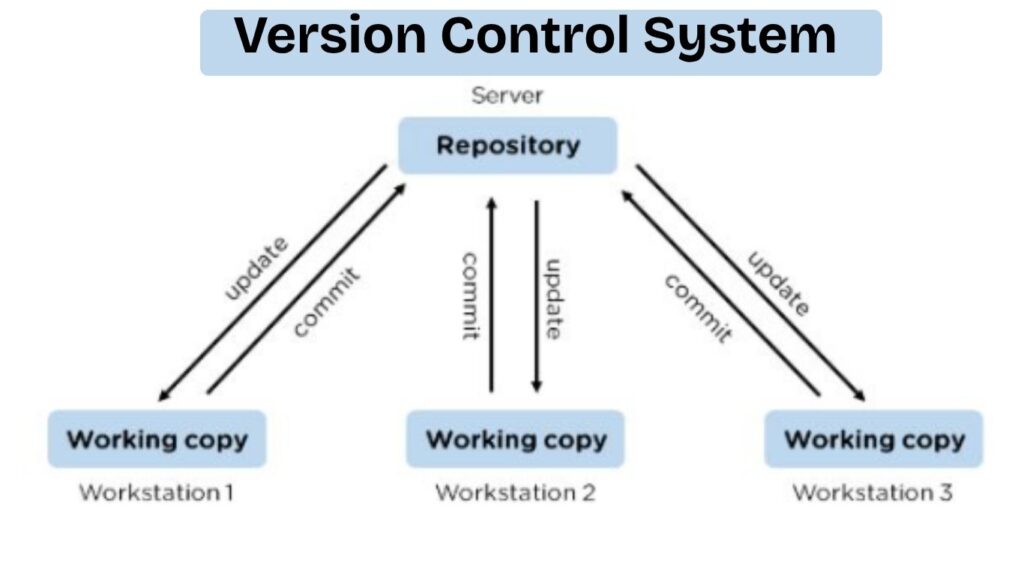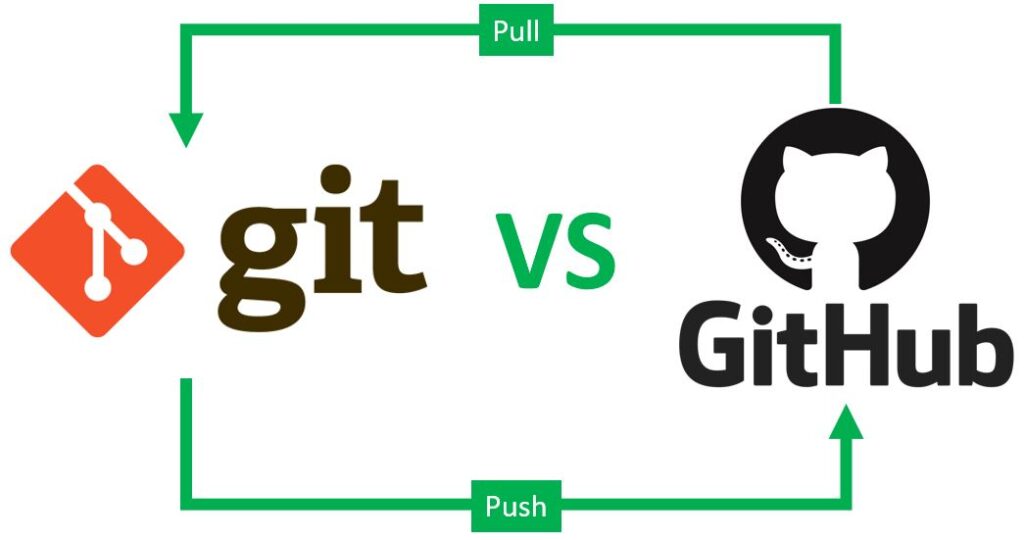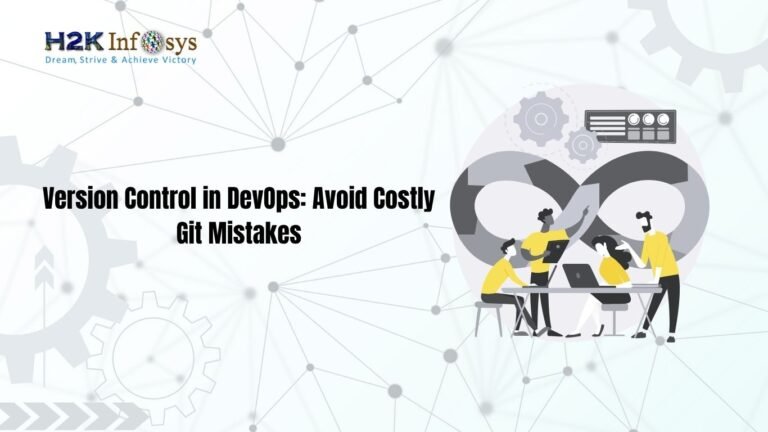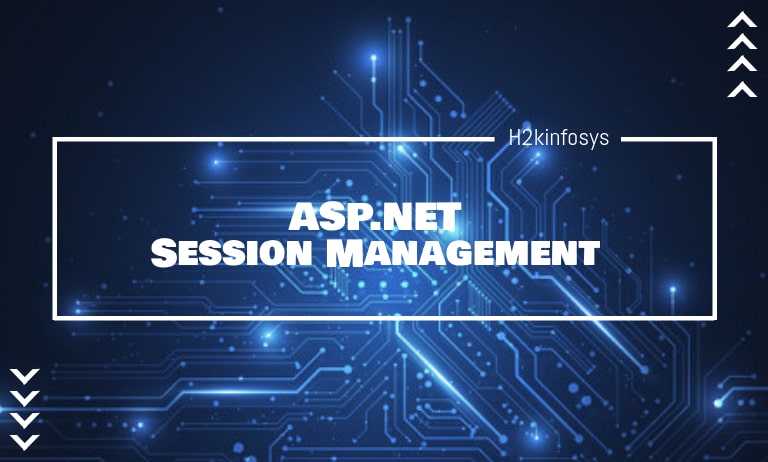Introduction: Why Version Control in DevOps Matters
In today’s fast-paced DevOps environments, even a small misstep in version control can lead to massive production issues. Imagine a developer overwriting critical code because of a mismanaged branch. Or worse, a rollback that erases weeks of progress. These mistakes are costly, but they are avoidable. Version Control in DevOps is not just a best practice, it’s a necessity. Whether you’re a budding developer or a seasoned engineer, understanding version control can save your project, your job, and your team’s productivity.
H2K Infosys’ devops training online helps learners master these skills, ensuring that you not only avoid these mistakes but also build scalable, efficient, and secure DevOps pipelines.
What Is VCS (Version Control System) and Its Advantages?
A Version Control System (VCS) tracks changes to code over time. It allows multiple developers to work on the same project without overwriting each other’s work.

Key Advantages:
- Change Tracking: Monitor every modification to the codebase.
- Collaboration: Work seamlessly with distributed teams.
- Branching & Merging: Experiment in isolated branches before merging stable code.
- Backup and Recovery: Revert to previous versions when needed.
- Audit Trail: Maintain a history of who changed what and when.
Why Is It Crucial in DevOps?
Version control supports:
- Continuous Integration (CI): Merging code frequently to detect issues early.
- Automation: Seamless builds and deployments using Git triggers.
- Team Collaboration: Track who made changes, when, and why.
- Rollback: Instantly revert to a previous version if something goes wrong.
Industry Insight: According to a GitLab survey, 83% of DevOps teams cite version control as their most-used collaboration tool.
Whether you’re deploying containers or configuring cloud resources, Version Control in DevOps ensures your changes are safe, traceable, and reversible.
Why Learn Git & GitHub?
Git and GitHub are the cornerstones of modern software development and DevOps practices. They allow teams to collaborate efficiently, manage code changes, and automate deployment processes.

Benefits of Learning Git & GitHub:
- Industry Standard: Git is used by millions of developers and enterprises worldwide.
- Job-Ready Skill: Most DevOps roles demand proficiency in Git and GitHub.
- Error Reduction: Structured workflows and version control prevent costly errors.
- Continuous Integration Support: Git works seamlessly with CI/CD tools for automated deployments.
- Portfolio Building: GitHub lets you showcase your projects, contributions, and coding skills.
Mastering Git and GitHub is essential for efficient Version Control in DevOps and ensures you stand out in a competitive job market.
Installing and Configuring Git
Git is the most widely used distributed version control system. Here’s how to install and configure it.
Step 1: Install Git
- Windows: Download from the official Git website and run the installer.
- Linux: Use the package manager (e.g.,
sudo apt install git). - macOS: Use Homebrew (
brew install git).
Step 2: Basic Configuration
Run the following commands after installation:
git config --global user.name "Your Name"
git config --global user.email "your.email@example.com"These commands ensure your commits are associated with your identity. This setup is the foundation of secure and reliable Version Control in DevOps.
Creating a GitHub Account
Creating an online Git hosting account enhances collaboration in DevOps environments.
Step-by-Step Guide:
- Go to the official Git platform site.
- Sign up using your email.
- Verify your email address.
- Create a new repository (repo) to start tracking your projects.
Repositories act as central codebases. For DevOps, this means faster deployments, easier rollbacks, and traceable CI/CD pipelines, all powered by Version Control in DevOps.
Familiarizing with Git Bash
Git Bash is a command-line interface that allows you to interact with Git using Unix commands.
Key Git Bash Commands:
git init: Initialize a new Git repository.git status: Check repo status.git add .: Stage changes.git commit -m "message": Commit staged changes.git log: View commit history.
Git Bash simplifies workflows and reinforces the reliability of Version Control in DevOps by offering precise control over project changes.
Common Git Mistakes to Avoid in DevOps
1. Committing Secrets to Repos
Mistake: Adding passwords or tokens to code.
Fix: Use .gitignore and environment variables.
2. Ignoring Branching Strategies
Mistake: Committing directly to main/master.
Fix: Use feature branches, pull requests, and code reviews.
3. Not Pulling Before Pushing
Mistake: Overwriting teammate’s code.
Fix: Always run git pull before git push.
4. Poor Commit Messages
Mistake: Using vague messages like “update” or “fix.”
Fix: Write clear, descriptive commit messages.
Avoiding these pitfalls strengthens your implementation of Version Control in DevOps.
Real-World Application: Git in DevOps Pipelines
In a CI/CD pipeline:
- Git repositories serve as the source of truth.
- Triggers like
pushevents launch automated builds. - Rollbacks are simplified through Git tags or commits.
Case Study: A leading software firm reduced rollback time by 70% after training its team on Version Control in DevOps. They adopted structured branching and standardized commit practices to prevent merge conflicts and lost work.
Step-by-Step Git Workflow for DevOps Teams
- Clone the Repository:
git clone https://your-repo-url- Create a New Branch:
git checkout -b feature-branch- Make and Stage Changes:
git add .
git commit -m "Added new feature"- Push to Remote:
git push origin feature-branch- Create a Pull Request (PR) and Merge After Review
- Delete the feature branch after successful merge to maintain hygiene
This structured approach is foundational to strong Version Control in DevOps.
Git Best Practices in DevOps
- Use .gitignore: Prevents unnecessary files from entering version control.
- Small, Frequent Commits: Makes troubleshooting easier.
- Rebase vs. Merge: Rebase for clean history; merge for context.
- Protect Branches: Use role-based permissions.
These practices solidify Version Control in DevOps and enhance team performance.
Diagram: Git Workflow in a DevOps CI/CD Pipeline
Developer --> Git Repo --> CI Trigger --> Automated Tests --> Build --> Deploy --> MonitorThis diagram illustrates how Version Control in DevOps integrates with automation, enabling continuous innovation with minimal risk.
Key Takeaways
- Version Control in DevOps is critical for collaboration, security, and productivity.
- Git is the preferred tool, and mastering its commands and workflows is essential.
- Avoid common mistakes like committing secrets or skipping pulls.
- Use structured workflows, branching strategies, and commit standards.
Conclusion
Avoid costly mistakes by mastering Version Control in DevOps. Enroll in H2K Infosys’ devops training online to gain hands-on expertise and real-world confidence.
Boost your DevOps career with devops certification training that includes placement support and live project experience. Gain real-world skills with devops certification training and placement support.


























